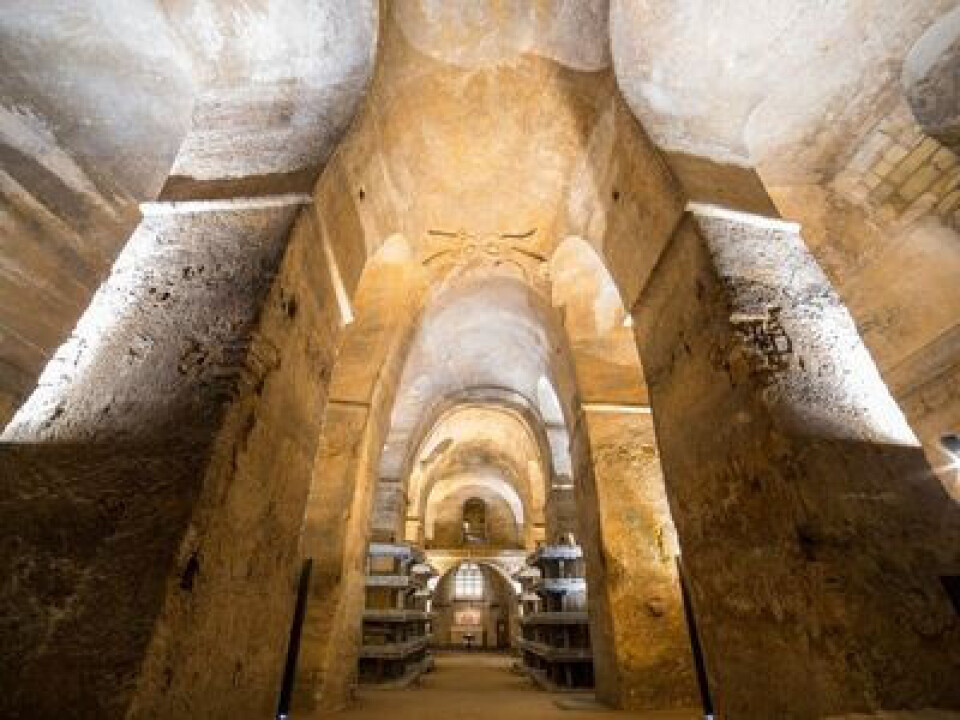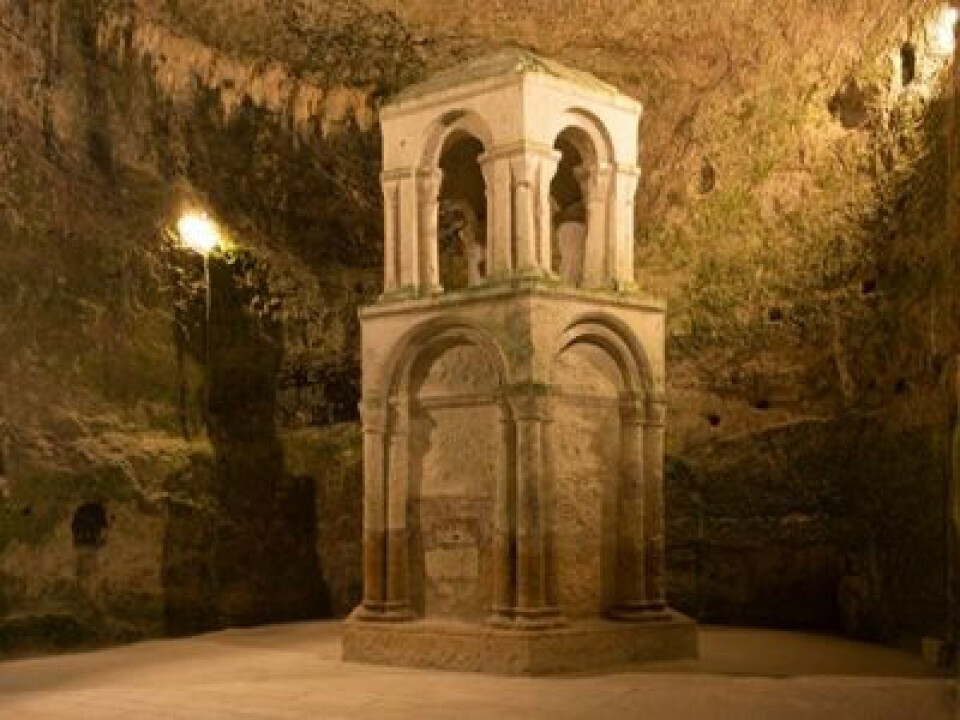-
Duck Cold! Four French phrases to use when it is freezing outside
We remind you of French expressions to use to describe the drop in temperature
-
When and why do we say le moral dans les chaussettes?
We explore this useful expression that describes low spirits
-
The origins and meaning of tirer les marrons du feu
As Christmas approaches, we look at a phrase to describe someone who takes advantage of a situation
Discover mediaeval underground cave churches in Nouvelle-Aquitaine
We learn why Christians dug down into solid rock to create places of worship and where we can see them today

Most of us picture mediaeval churches as tall structures with towering spires that reach for the heavens, and mediaeval masons almost certainly built upwards to be closer to God.
Yet Christians also built downwards, establishing churches in caves and sometimes carving them out of solid rock.
We find these remarkable spaces across continents and territories.
In France, and particularly in the old province of Aquitaine, visitors can still trace the steps of the people who worshipped at underground altars in these dark, cavernous, rock-hewn churches.
There are many such subterranean structures to explore in the region, including the breath-taking, enormous cave churches of Aubeterre-sur-Dronne in Charente and Saint-Emilion in Gironde.
Why did Christians dig churches underground?
What led mediaeval Christians to burrow into solid rock rather than place brick upon brick, stone upon stone, to build their places of worship? There are several explanations.
Mediaeval Christians associated caves with Jesus: three of the Gospels describe Jesus being placed in a rock-cut tomb after his crucifixion.
The evangelist apostle John received visions for his Book of Revelation in a cave on the Greek island of Patmos.
The earliest Christian hermits, such as St Anthony, retreated to caves in the wilderness to battle their demons.
Although the origins of the underground churches in Aquitaine are for the most part lost in the mists of time, we can hazard a guess as to why they were established in this area.
The porous, calciferous rock of the region resulted in a proliferation of grottos and caves formed by water erosion.
These naturally occurring caves and cubby holes provided ideal lodgings for the many hermits known to be present in Aquitaine from the eighth century, and who continued their ascetic confinement right up to the fifteenth century when Protestants emptied – and often destroyed – the underground churches created in these locations.
But how did this tale of solitary hermits secreted away in subterranean nooks and crannies develop into the construction of full-blown churches?
Wherever miracle-working, saintly hermits resided, crowds of admirers followed.
Cults around these holy introverts sprung up, necessitating larger places of worship to accommodate all their fans.
In the fourth century, for example, Saint Martin of Tours was secluded in a wooden cell in Marmoutier, while his followers carved out cells in the rock of the overhanging mountain.
The eighth-century Breton monk, Saint Emilion, excavated not only a cell from the rock, but an oratory, too.
The monolithic church of Saint-Emilion
Although Saint-Emilion will forever be associated with its Unesco World Heritage-listed vineyards, the quaint mediaeval village of the same name also houses a vast rock-hewn subterranean church.

Inside the underground church at Saint-Emilion, facing east towards the Gothic window and still-functioning altar; Photo: Steve LeClech
The place of worship was carved out of the limestone rock in the twelfth century for a community of monks and the hordes of pilgrims who came to venerate the miracle-working saint’s tomb on their way to Santiago de Compostela.
The cave church also served as a burial place for many generations of monks, whose tombs still remain in the crypt.
The enormous church (38 metres long and 12 metres tall) houses remnants of fourteenth-century paintings on its walls, while above ground a twelfth-century bell tower is topped by a sixteenth-century spire.
The still-consecrated space continues to hold masses, as well as concerts and ceremonies for a local wine confraternity.
Church of Saint-Jean, Aubeterre-sur-Dronne
Holder of a coveted Plus Beaux Villages label, it is Aubeterre’s underground church which marks this village out as truly exceptional.
Hewn from the rock face in the early 1100s to house a relic of the Holy Cross brought back from the Holy Land by local viscount Pierre de Castillon, it is hard to believe that this immense subterranean construction lay forgotten for around 300 years after a rock fall blocked its entrance during the fifteenth century.
The church was originally linked directly to de Castillon’s chateau above via a corridor that remains blocked today, but which once provided the viscount and his descendants with personal access to the relics.
These holy objects were clearly precious to the mediaeval community, as a 6-metre-tall, two-storey reliquary was carved out of solid stone to house and display them.

The design of the monolithic reliquary at Aubeterre was inspired by the Holy Sepulchre of Jerusalem, discovered during the First Crusade to the Holy Land at the end of the eleventh century; Photo: Daan Kloeg / Shutterstock
Revolutionaries turned the church into a saltpetre factory, and then in the following century it was used as a cemetery.
The church was classified as a Monument historique in 1912, and since a World Monuments Fund restoration programme in the late 1990s, visitors can now see the largest cave church in Europe in all its glory.
These are just two of the underground churches in Aquitaine open to visitors.
Seek out also the chapel of Saint-Georges de Gurat, in Charente, which was carved out of a cliff and served as a stop-off for pilgrims on the way to Santiago.
Visiting these special spaces, which are mostly open all year round, gives us a unique insight into the lives of the people who once descended deep below ground in order to worship a God way up in the firmament.
Related articles
Two saints buried in one tomb still draws pilgrims to French priory
Ken Follett visits Brittany cathedral he is helping to restore
























